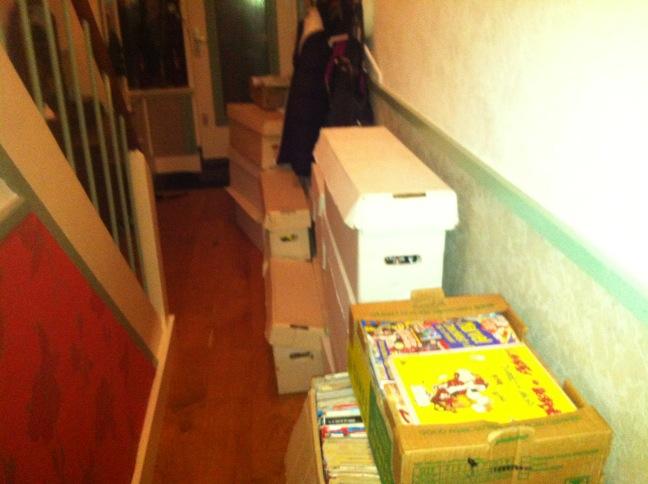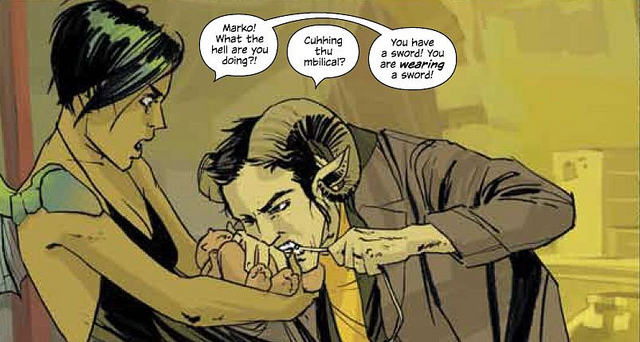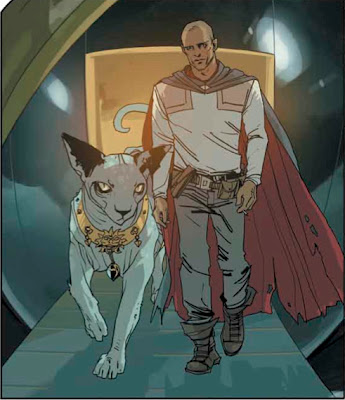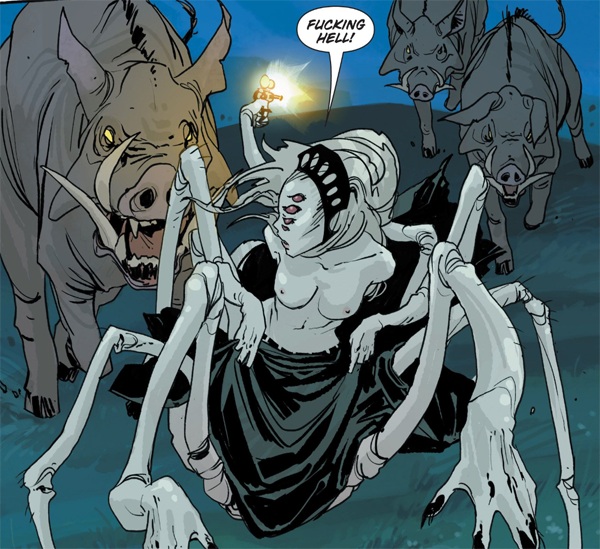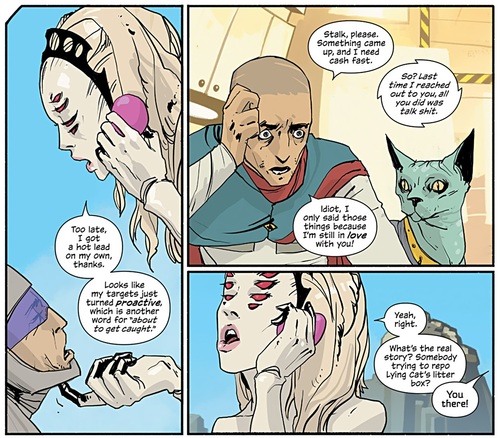A couple of weeks ago Pádraig Ó Méalóid looked at the strange relationship Grant Morrison has with Alan Moore. It turns out Morrison was Not Amused and keen to let people know this. So The Beat gave him the space to fisk the article. It’s all a bit needy, spending that much time and space refuting allegations made decades ago in different contexts. You get the feeling he’s too defensive and honestly, mocking it is the only right response.
However, since his extending whinge got on my tits, I thought I’d take umbrage at one part of argument, this:
I’d already submitted art and story samples several times to both DC and Marvel, along with a pitch for a crossover entitled “Second Coming” to DC’s New Talent Programme in 1982. I was on the files and I didn’t stop angling for work. DC would have found all of us, with or without Alan Moore, who seems curiously unable or unwilling to acknowledge that he was part of a spontaneous movement not its driving force or sole font of creativity.
Which is somewhat contradicted a few paragraphs later:
To get work with Marvel UK and “2000AD” I suppressed my esoteric and surrealist tendencies and tried to imitate popular styles – in order to secure paying jobs in the comics mainstream. There is a reason those pieces were written in a vaguely Alan Moore-ish style and it’s because I was trying to sell to companies who thought Moore was the sine qua non of the bees knees and those stories were my take on what I figured they were looking for.
If Morrison would’ve made it without Moore’s pionering work, if Moore’s influence on the development of the “British Invasion”, comicd edition wasn’t that great, why was it important to imitate him?
Because of course without Moore’s Swamp Thing, without Watchmen, without the commercial and critical success he brought to DC, at a time when unlike now it was actively courting an adult audience, trying to establish itself as the thinking person’s mainstream comics publisher, there wouldn’t have been a Hellblazer or Sandman or Animal Man. Without Moore to blaze the trail, to teach DC to handle writers not desparate to write Superman, not beholden to corporate superheroes, would Morrison have had the freedom he had to revamp Doom Patrol?
Of course not.
Yes, there was a larger talent pool in the UK in the early to mid eighties, thanks to 2000AD and the surge in punk inspired, d.i.y. alternative comix, but there was no guarantee that these writers would’ve crossed the ocean without an Alan Moore to do it first. His influence really cannot be overestimated: Marvelman, V for Vendetta, Halo Jones, Watchmen: any writer would give their left arm for just one of them. Through him, DC learned how profitable it could be to have such an independent, literary writer on board; through him, it also learned how easy it was to lose such a writer, through scamming him out of his rights or mucking about with his scripts, something that all the writers who would go on to form Vertigo would profit from.
Both DC and Morrison have forgotten those lessons, both profit from this, but both are the lesser for it.

